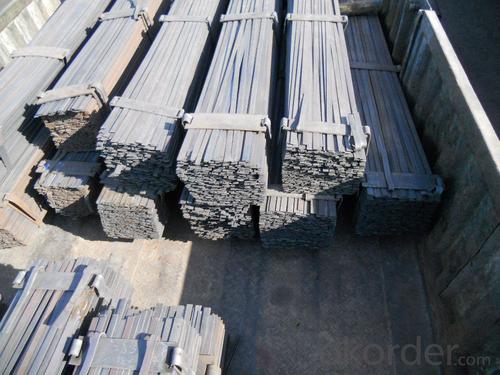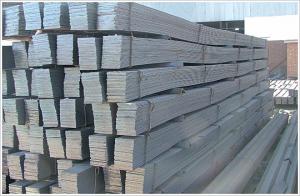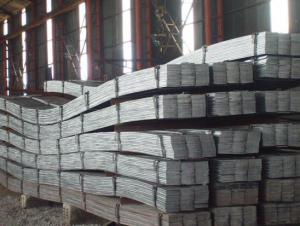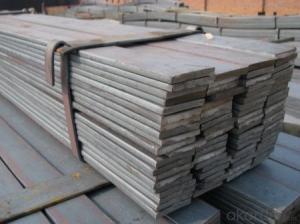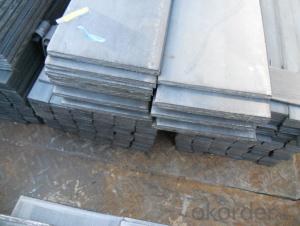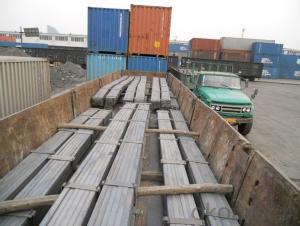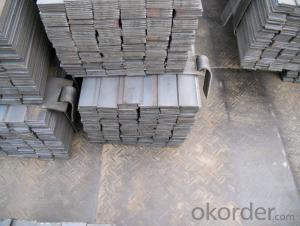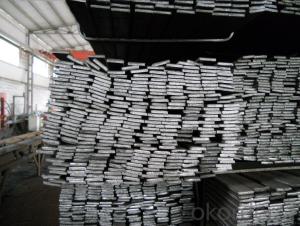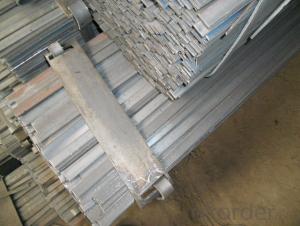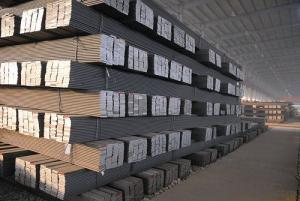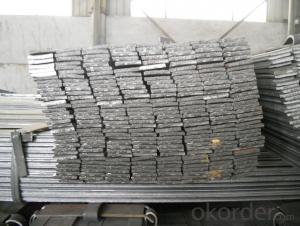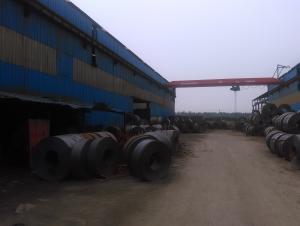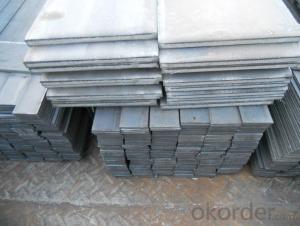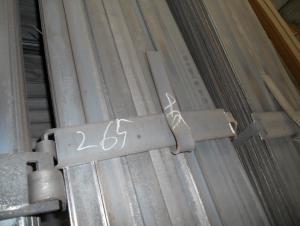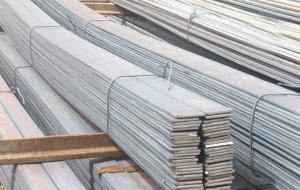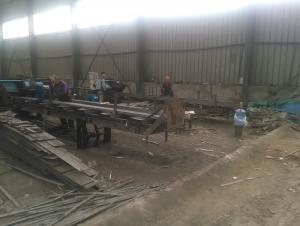GB Standard Steel Flat Bar with High Quality 20mm
- Loading Port:
- Tianjin
- Payment Terms:
- TT OR LC
- Min Order Qty:
- 25 m.t
- Supply Capability:
- 15000 m.t/month
OKorder Service Pledge
OKorder Financial Service
You Might Also Like
Product Description of GB Standard Steel Flat Bar with High Quality 20mm:
Specification of GB Standard Steel Flat Bar with High Quality 20mm:
-Standard: GB
-Material: Q235
-Length: 6m, 12m
-Size:
| Size(mm) | Mass(Kg/m) |
| 20*5 | 0.78 |
| 20*8 | 1.26 |
Package & Delivery of GB Standard Steel Flat Bar with High Quality 20mm:
1.The steel flat bars will be packed in bundle with steel wire at each end of every bundle and color marking in order to help the customer to recognize his goods more easily at sight.
2. And the steel flat bars could be loaded into 20ft or 40ft container, or by bulk cargo. If the weight of each bundle reaches more than 3.5 mt, the loading by break bulk cargo should be choosed. When the weight of each bundle reaches less than 3mt, the loading by container should be choosed.
3.As for the transportaion from mill to loading port, the truck will be usually used. And the maximum quantity for each truck is 40mt.
4.All in all, we could do in accordance with customer's request.
FAQ:
Q1: Why buy Materials & Equipment from OKorder.com?
A1: All products offered by OKorder.com are carefully selected from China's most reliable manufacturing enterprises. Through its ISO certifications, OKorder.com adheres to the highest standards and a commitment to supply chain safety and customer satisfaction.
Q2: How do we guarantee the quality of our products?
A2: We have established an advanced quality management system which conducts strict quality tests at every step, from raw materials to the final product. At the same time, we provide extensive follow-up service assurances as required.
Q3: How soon can we receive the product after purchase?
A3: Within three days of placing an order, we will arrange production. The shipping date is dependent upon the quatity, how many sizes you want and the plan of production, but is typically 1 month to 2 month days from the beginning of production.
Images of GB Standard Steel Flat Bar with High Quality 20mm:
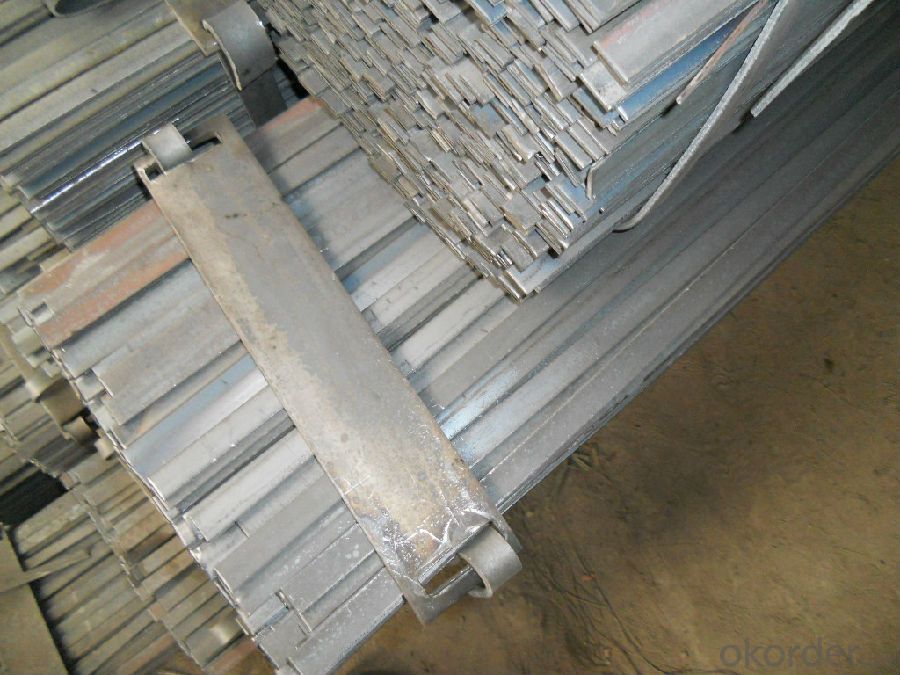
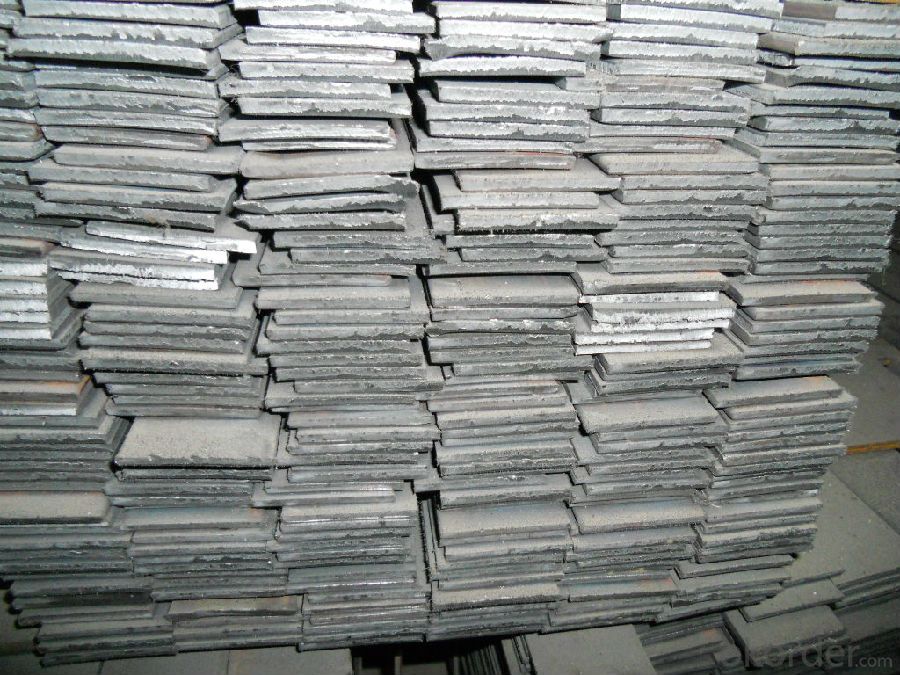
*If you would like to get our price, please inform us the size, standard/material and quantity. Thank you very much for your attention.
- Q: How do steel flat bars contribute to the overall stability of a structure?
- Steel flat bars contribute to the overall stability of a structure by providing strength and rigidity. Due to their flat shape, they offer excellent load-bearing capacity and resistance against bending or twisting forces. These bars can be strategically placed throughout the structure, serving as support beams, braces, or reinforcements to distribute and minimize the impact of external loads. Their high tensile strength and durability make them essential components in various construction applications, enhancing the overall stability and structural integrity of buildings, bridges, and other infrastructures.
- Q: Can steel flat bars be used for decorative purposes?
- Certainly, using steel flat bars for decorative purposes is a viable option. The sleek and modern appearance of steel flat bars lends itself well to adding an industrial and contemporary aesthetic to various applications. These bars can be utilized to create decorative accents, such as railings, trimmings, and ornamental details, both indoors and outdoors. When it comes to achieving different artistic designs, steel flat bars can be easily shaped, bent, and welded, making them highly versatile for decorative purposes. Furthermore, their durability and resistance to corrosion make them ideal for long-lasting and low-maintenance decorative elements. Whether it be for architectural features, furniture, or artistic installations, steel flat bars offer an aesthetically pleasing and functional choice for decorative purposes.
- Q: How do steel flat bars contribute to the strength and stability of structures?
- Steel flat bars contribute to the strength and stability of structures in several ways. Firstly, their flat shape provides a large surface area for distributing loads evenly, allowing them to bear heavy weights and resist bending or warping. This makes them ideal for use in load-bearing applications such as beams, columns, and trusses. Furthermore, steel flat bars have high tensile strength, which means they can withstand large amounts of tension without breaking. This property is crucial in structural design, as it ensures that the bars can resist forces that pull them apart, such as those experienced during earthquakes or high winds. Additionally, the rigid nature of steel flat bars helps to prevent excessive deflection or movement in structures. By acting as stiffening elements, they minimize any unwanted bending or sagging, thereby enhancing the overall stability of the structure. Moreover, steel flat bars are highly durable and resistant to corrosion, making them suitable for use in various environments and weather conditions. This longevity ensures that structures built with steel flat bars will remain strong and stable over an extended period. Overall, the use of steel flat bars in construction significantly contributes to the strength and stability of structures by providing even load distribution, high tensile strength, resistance to deflection, and durability. These qualities make steel flat bars a reliable and essential component in building structures that can withstand various external forces and maintain their integrity for years to come.
- Q: Where can I buy ground level bending machine?
- Galvanized flat steel and galvanized steel (or steel) for welding, reliable connection, should be in addition to the contact regions on both sides of the weld, should also direct the flat curved (or rectangular) and steel (or steel) and steel pipe welding, when welding on the steel pipe wrapped around the welding length 2 times less than the width of flat steel.
- Q: Can steel flat bars be used in the oil and gas industry?
- Yes, steel flat bars can be used in the oil and gas industry. Steel flat bars are versatile and commonly used in various industries due to their strength and durability. In the oil and gas industry, steel flat bars are utilized for a wide range of applications such as supports, frames, platforms, and structural components. These bars are often made from carbon steel or alloy steel, which provide excellent resistance to corrosion, high temperatures, and pressure. Additionally, steel flat bars can be easily welded and fabricated to meet specific project requirements, making them a suitable choice for the oil and gas industry.
- Q: How do steel flat bars compare to granite flat bars?
- Steel flat bars and granite flat bars have several differences that should be considered when comparing them. Firstly, steel flat bars are made from a durable and strong material, which makes them highly resistant to bending and breaking. Granite, on the other hand, is a natural stone that is known for its strength and durability. However, it is not as strong as steel and may crack or chip under heavy loads or impacts. Secondly, steel flat bars are more versatile in terms of their applications. They can be easily cut, welded, and shaped to fit specific requirements. Steel flat bars are commonly used in construction, manufacturing, and fabrication industries due to their malleability. Granite flat bars, on the other hand, are primarily used in the construction and design of countertops, flooring, and other architectural elements. Another important factor to consider is the aesthetic appeal. Steel flat bars have a sleek and industrial look, which makes them suitable for contemporary designs. Granite flat bars, on the other hand, have a natural and timeless beauty. They are available in various colors and patterns, making them a popular choice for adding elegance and sophistication to interior and exterior spaces. In terms of maintenance, steel flat bars require regular cleaning and occasional rust prevention measures to maintain their appearance and prevent corrosion. Granite flat bars, on the other hand, are relatively low maintenance. They are naturally resistant to stains, scratches, and heat, making them easy to clean and maintain. Lastly, the cost is an important consideration. Steel flat bars are generally more affordable than granite flat bars. While the price of granite varies depending on the quality and availability, it is generally more expensive than steel due to its natural sourcing and fabrication process. In summary, steel flat bars and granite flat bars have different strengths and weaknesses. Steel offers durability, versatility, and affordability, making it suitable for various applications. Granite, on the other hand, provides natural beauty, strength, and low maintenance, making it an excellent choice for adding elegance to architectural designs. Ultimately, the choice between steel and granite flat bars depends on the specific requirements, budget, and desired aesthetic of the project.
- Q: Do steel flat bars have a specific electrical conductivity?
- No, steel flat bars do not have a specific electrical conductivity. The electrical conductivity of steel can vary depending on the specific type and composition of the steel. Generally, steel is considered to be a poor conductor of electricity compared to materials such as copper or aluminum, but it can still conduct electricity to some extent. The conductivity of steel can be influenced by factors such as the presence of impurities, alloying elements, and the heat treatment process. Therefore, it is recommended to refer to the specific properties and specifications of the steel flat bar in question to determine its electrical conductivity.
- Q: How do steel flat bars perform in terms of fire resistance?
- The fire resistance properties of steel flat bars are excellent. When exposed to high temperatures, they do not easily deform or lose their structural integrity due to their high melting point. Steel's melting point is approximately 1370 degrees Celsius (2500 degrees Fahrenheit), which is significantly higher than typical fire temperatures. As a result, steel flat bars can maintain their strength and stability even in intense fire conditions. Moreover, steel does not aid in the propagation of fire because it is non-combustible. It does not release flammable gases or emit toxic fumes when subjected to fire, making it a safe option for fire-resistant applications. In addition, steel flat bars have a slow rate of heat transfer. This means that they can effectively act as a barrier, slowing down the spread of heat from the fire to the surrounding areas. This capability helps contain the fire and prevents it from spreading to other sections of a structure. Furthermore, steel flat bars are frequently utilized in fire-rated assemblies and construction systems, such as fire doors, fire-resistant walls, and fireproofing systems. These applications are specifically designed to meet specific fire resistance ratings and undergo thorough testing to ensure their ability to withstand fire conditions for a specific duration. Overall, steel flat bars are highly dependable and perform admirably in terms of fire resistance. They provide structural stability, do not contribute to the spread of fire, and are capable of withstanding high temperatures effectively. This makes them an ideal choice for fire-resistant applications in various industries.
- Q: Can steel flat bars be used in the manufacturing of agricultural machinery?
- Yes, steel flat bars can be used in the manufacturing of agricultural machinery. Steel flat bars offer high strength and durability, making them suitable for various components and structures in agricultural machinery such as frames, brackets, and supports. They can withstand heavy loads, provide stability, and withstand harsh environmental conditions commonly encountered in agricultural operations. Additionally, steel flat bars can be easily fabricated, welded, and machined to meet specific design requirements, making them a versatile choice for manufacturing agricultural machinery.
- Q: -40x4 hot galvanized flat steel, a water 1m, what do you mean?
- Water is to protect the wall foundation using cement mortar width not less than 600 of a circle along the walls of the cement ground, if the main part of the project before the electrical engineering, auxiliary grounding length less than in bulk water, auxiliary grounding, ditching to destroy the water, so that the design requirements of 1 meters water is conducive to the construction of welding, may be more than one meter in order to facilitate their work.
Send your message to us
GB Standard Steel Flat Bar with High Quality 20mm
- Loading Port:
- Tianjin
- Payment Terms:
- TT OR LC
- Min Order Qty:
- 25 m.t
- Supply Capability:
- 15000 m.t/month
OKorder Service Pledge
OKorder Financial Service
Similar products
Hot products
Hot Searches
Related keywords



